
Trees Facts, Benefits and 4 Amazing Species
A tree is a tall plant with a trunk and branches made of wood. Trees are the largest and oldest living things on Earth. There are several parts that make up a tree. The main parts of a tree include roots, trunk, branches and leaves. Trees reproduce through pollination via insects, wind and animals. Trees produce seeds that can grow into a separate adult tree if the conditions are right.
Facts about Trees
- According to the fossils, scientists believe that trees have been on Earth for 370 million years.
- Trees can live for thousands of years.
- The oldest tree ever discovered is approximately 5,000 years old.
- There are more than 60,000 species of trees on Earth.
- Brazil has the most species of trees. There are 5,776 tree species there.
- Trees usually grow to over 90 metres. Some trees can grow to around 100 meters in height.
- Plants that are not tall enough to be considered trees are often called shrubs.
- A single tree has many roots. The roots usually grow underground. They help the tree to stay upright and alive. They carry water and nutrients from the soil to the tree.
- The trunk is the main body of the tree. It is protected by an outside layer of bark.
- Branches grow from the trunk. They spread out so that the leaves can get more sunlight.
- Trees have growth rings inside their trunk. You can count the tree rings to find out how old it is.
- Trees are able to make their own food through the process of photosynthesis. Through photosynthesis, trees take carbon dioxide, water and sunlight and turn them into oxygen and sugars.
- Tree leaves are the parts that take in the sunlight that is needed for photosynthesis. The more sunlight they get, the healthier the tree will be.
- The leaves of a tree are green most of the time, but they can come in many colors, shapes and sizes. Trees with leaves all year round are called evergreens, and those that shed their leaves are called deciduous. Deciduous trees and shrubs generally lose their leaves in Autumn, and they grow back in Spring.
- Trees are able to communicate and defend themselves against attacking insects. They can flood their leaves with chemicals called phenolics when the insects begin their raid. They can also signal danger to other trees so they can start their own defense.
- Different parts of a tree grow at different times throughout the year. Typically, most of the foliage growth happens in spring, followed by trunk growth in summer and root growth in fall and winter.
Benefits of Trees
- Trees provide natural materials such as wood and paper. They are very useful to us and are used for lots of things. The wood from trees is used for building houses, boats, and furniture. The wood can also be used as fuel for a fire, both for warmth and cooking. The paper you use at school is also from trees.
- Trees provide food. They are sources of food like fruit and nuts. The sap from some trees is used to create syrups.
- Tree rings can predict climate change. A tree’s rings do not only reveal its age, they can also indicate the occurrence of natural disasters such as volcanoes or a drought event. In the years of good growth and supply of resources, the ring is thick. When resources are scarce in the ecosystem, it becomes thin.
- Trees help reduce the effects of climate change. They produce oxygen and reduce the amount of carbon dioxide in the atmosphere. A mature tree can absorb more than 48 pounds of carbon dioxide each year.
- Planting trees can help reduce your energy costs. A shade of a tree can help cool your home in the summertime. Not only do they provide shade in the summer, but serve as a windbreak in the winter, too.
- Trees can help reduce stress. Research suggests that being around trees is good for our mental and social well-being. Research also suggests that nature experiences help us feel kinder toward others. This is partly because trees release chemicals called phytoncides. When we breathe them in, it can reduce blood pressure, lower anxiety levels, and increase pain threshold.
- Trees block noise by reducing sound waves. They reduce noise through a phenomenon called sound attenuation, which is the reduction of sound intensity. Leaves, twigs, and branches on trees absorb and deflect sound waves to mask unwanted noise.
- Trees improve water quality. As rain falls to the Earth, it is slowed and filtered by trees, helping it soak into the soil. Trees then serve as natural sponges, collecting and filtering rainwater and releasing it slowly into streams and rivers. They also prevent soil from eroding into our waterways, reduce stormwater runoff, and lessen flood damage.
Species of Trees
Trees include a huge variety of species. In this lesson, we are going to know 4 of them, which are:
- Palm Trees
- Banyan Trees
- Dogwood Trees
- Cherry Blossom Trees
Palm Trees
Palm trees are one of the most common planted trees all over the world. Throughout history, palms have had important roles in humans’ lives. Many common products and foods come from palms. There are about 2600 species of palm trees all around the world, from the desert to the rainforest. Most palms live in tropical, subtropical, and warm temperate climates.
Most palms are a straight, unbranched stem. They have two different types of evergreen leaves: palmate and pinnate. Palmate leaves grow in a bunch at the end of a stem. Pinnate leaves are like feathers, growing all along one side of a stem. The fruit of the palm is usually a single seed surrounded by flesh. Some kinds may contain two or more seeds in each fruit. Well known palm trees are Coconut palm, Date palm and Oil palm.
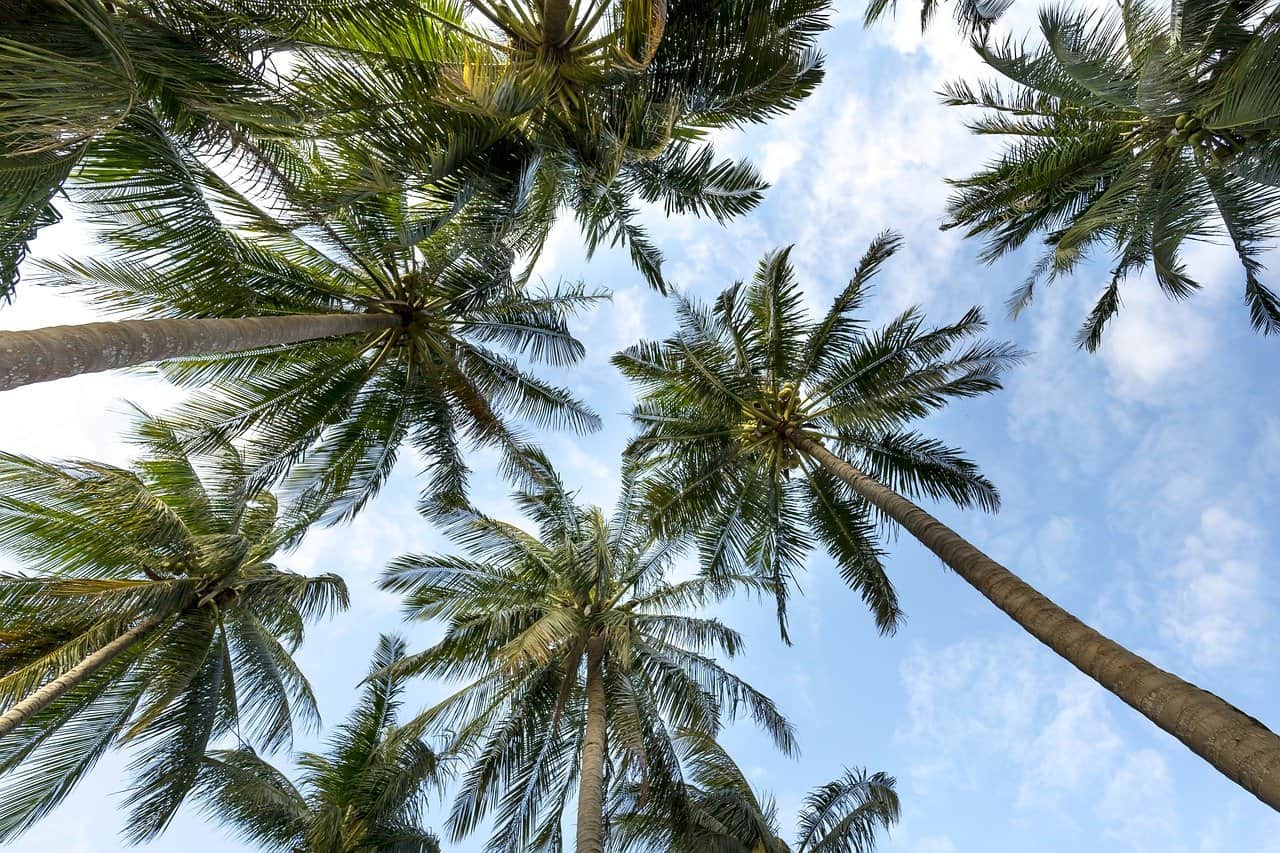
Facts about Palm Trees
- Some palms can live for more than a century. Indeed, palms may be the oldest living trees because their cells are not replaced with new cells.
- Some palms are skyscrapers. The tallest palm tree can grow up to 197 feet tall.
- The smallest palm in the world is the Dypsis Minuta in Madagascar that rarely grows over 12 inches.
- The “Coco de Mer” palm tree has the largest seeds of any plant on earth. They can reach 20 inches in diameter and 66 pounds weight.
- Young palm trees prefer shade because it protects its delicate leaves until they are strong enough to handle the heat.
- Not all palms have edible fruit. Some palms, such as coconuts and dates, have delicious fruits. Others, such as sago, have poisonous fruits to humans and animals.
Benefits and Significance of Palms
- There are many kinds of food from palms, such as coconuts and dates.
- Palm oil is used in everything, from cosmetics to food ingredients.
- The palm branch was a symbol of triumph and victory in Roman times. The Romans rewarded champions of the games and celebrated success in war with palm branches.
- Jews had a tradition of carrying palm branches during festive times.
- Palm stems represented long life to the Ancient Egyptians.
- The palm represents rest and hospitality in many cultures of the Middle East.
- Early Christians used the palm branch to symbolize the victory of the faithful over enemies of the soul.
Banyan Trees
Banyan is a fig tree that begins its life as an epiphyte. An epiphyte is a plant that grows on another plant. The branches of the banyan produce aerial roots. These roots descend and take root in the soil to become new trunk. Banyan is an evergreen tree that grows in tropical climate and in almost any soil.
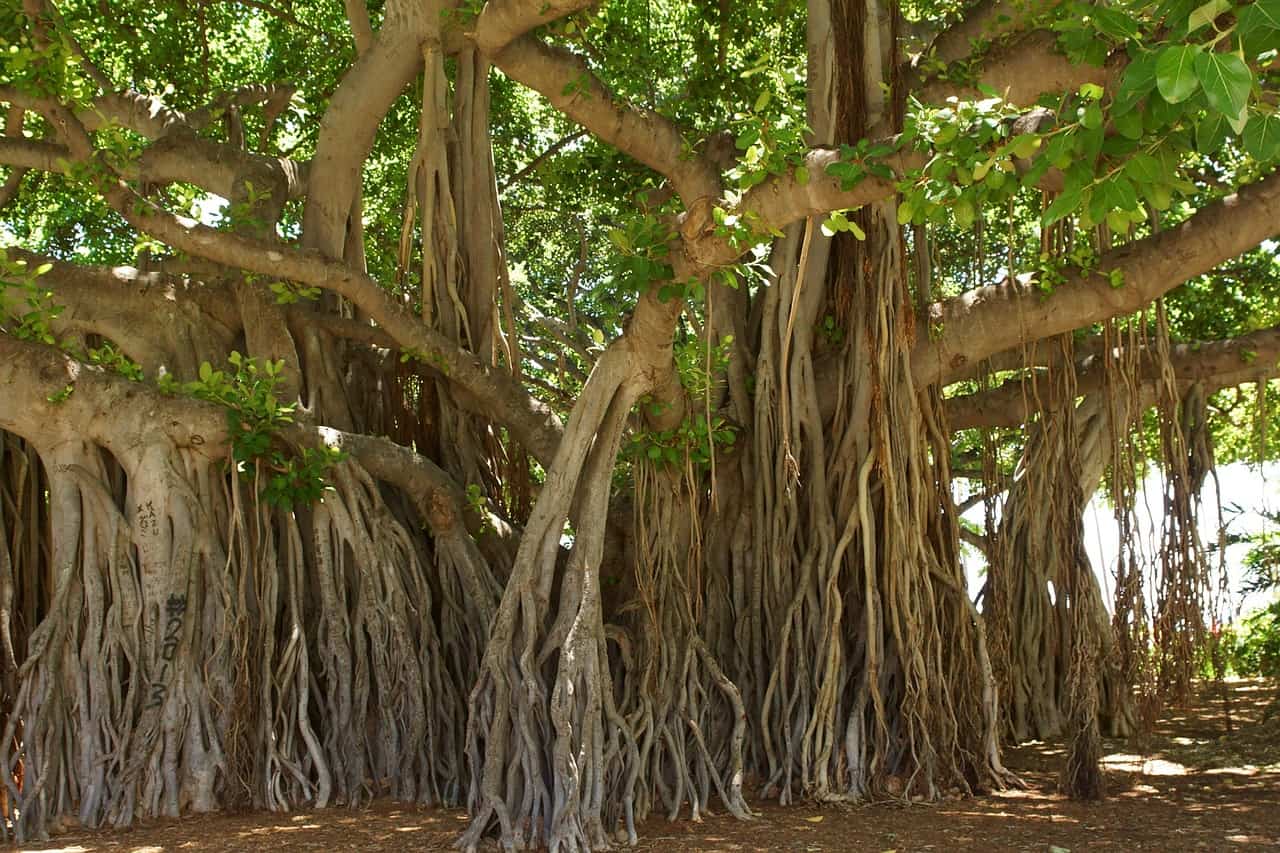
Facts about Banyan Trees
- The banyan is the national tree of India. It is important in the Hindu religion and mythology.
- The banyan is able to survive hundreds of years.
- It can grow up to 30 meters in height.
- Banyans are the biggest trees in the world in terms of the area they cover. Some of the banyan trees can shelter around 20,000 people.
- For thousands of years, people have used banyans as source of medicines.
Benefits of Banyan Trees
- Banyan tree can cure chronic diarrhea. Taking the small budding leaves and soaking them in water creates a powerful medicine for healing diarrhea.
- The aerial roots of the banyan are like a natural toothpaste. Chewing on them makes the teeth strong and prevents gum disease, tooth decay and bleeding gum.
- The bark of the banyan tree is good for boosting immunity.
- The bark of the banyan tree is good for lowering the bad cholesterol level in the body while keeping the good cholesterol level high.
- The sap of the banyan leaves have anti-inflammatory properties, so it can be helpful against conditions like arthritis.
- Making an infusion of the roots of the banyan is helpful in treating high blood sugar levels. (What is an infectious disease?)
Dogwood Trees
Dogwood is a shrub or small tree that grows in north temperate regions. Dogwood can be found in the evergreen forests or on the edges of deciduous forests. It grows on fertile, loamy soil in areas that provide enough moisture and shade. The scientific name for the dogwood tree is Cornus Florida. The common name for the dogwood tree is flowering dogwood.
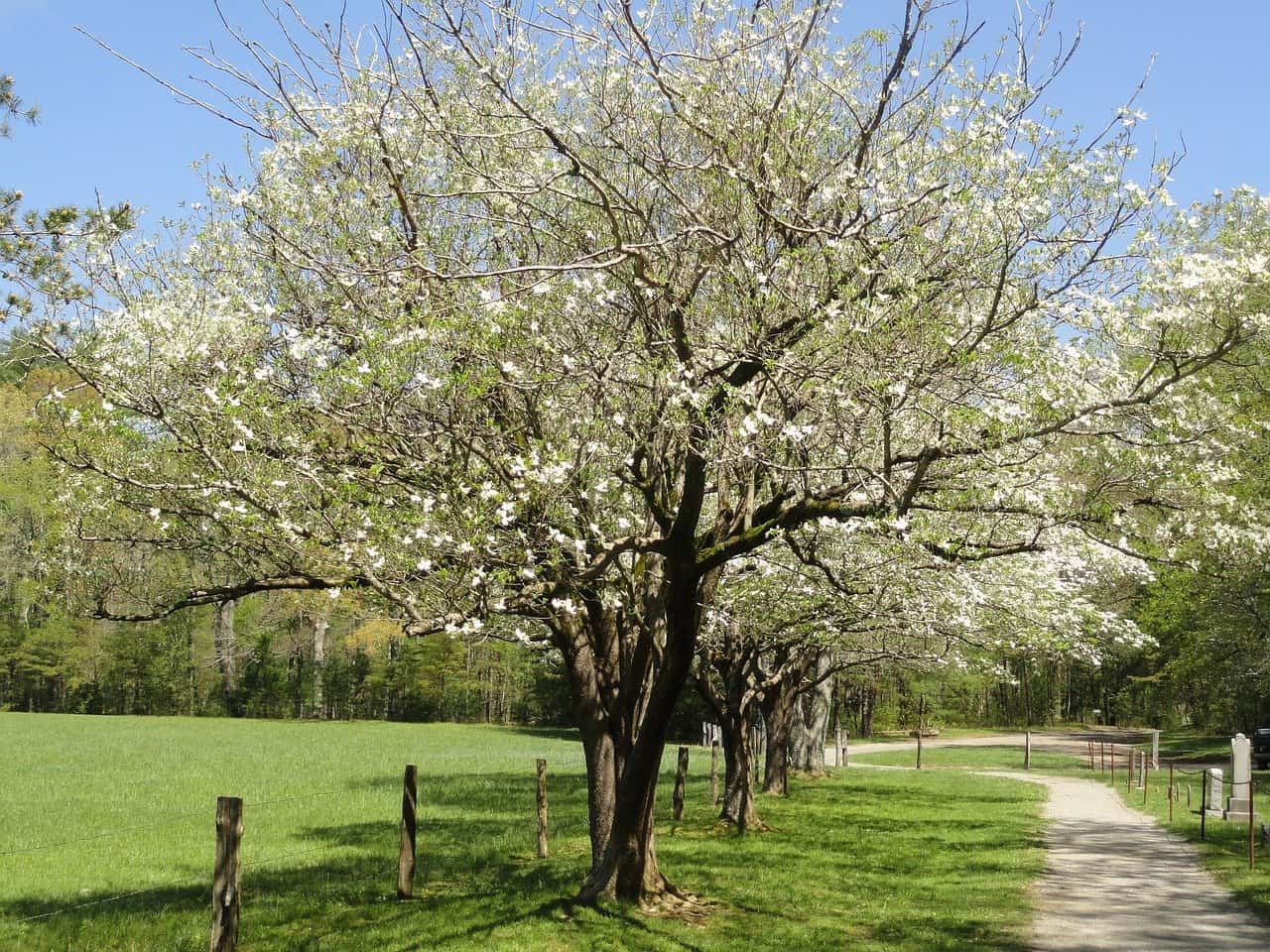
Facts about Dogwood Trees
- The dogwood tree is a deciduous tree, which means it loses its leaves seasonally.
- Dogwood can grow as a bush or a small tree. Its height does not exceed 15 to 25 feet.
- Dogwood can survive from 25 to 30 years in the best conditions.
- The maximum lifespan of dogwood is about 80 years.
- The leaves of the dogwood are simple, green with wavy edges. They are usually arranged oppositely on the branches.
- Dogwood trees have an alligator skin.
- Dogwood is a four-season tree. It has showy flowers in spring, leaves in summer and fall, fruits in fall and growing branches in winter.
- The dogwood tree contains both male and female reproductive organs. This means it can produce seeds on its own and pollinate itself.
- Flowering dogwoods produce red fruit in autumn.
- The fruit of the dogwood tree is red to yellowish red.
- The flowers of the dogwood tree can be red, pink or white.
Benefits of Dogwood Trees
- The roots and bark of the dogwood tree were used by Native Americans to treat malaria.
- The hard wood of dogwood trees can be used to make weaving shuttles and golf club heads. It can also be used for making some products such as spools, jewelry boxes, roller skates and tool handles.
- Bark-free branches of dogwood were used as toothbrushes in the past.
- Tea made of bark of the dogwood can be used to treat pain and fever.
- In traditional Chinese medicine, dogwood is used to treat dizziness, weakness and pain in the knees and back.
- Fruit of some species of dogwood are used in human diet, such as dogwood berries.
- Fruit and seed of dogwoods are important sources of food for wild birds and mammals.
- People cultivate flowering dogwood for ornamental purposes, such as decorating gardens.
Cherry Blossom Trees
A cherry blossom tree is a tree species in the Prunus genus that produces cherry blossom flowers. It is the national flower of Japan, and it is known as Japanese Cherry and “Sakura” in Japanese. Cherry Blossom Trees are deciduous trees. They grow in temperate climate. They need lots of sunlight and soil that is rich and fertile. They grow in different shapes and sizes. Some bloom early in the spring, while others are late bloomers. There are hundreds of types of cherry trees, and the most popular one is Yoshino cherry tree.
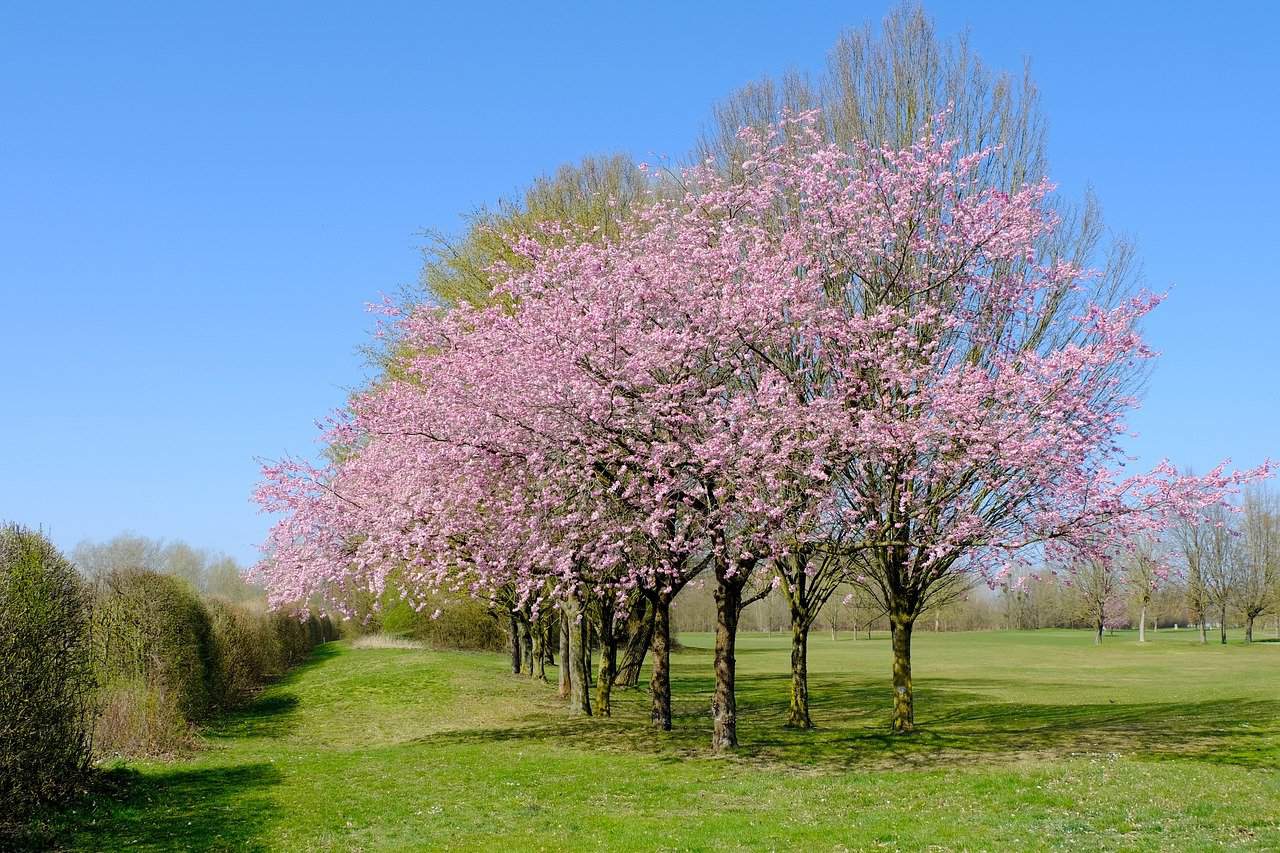
Facts about Cherry Blossoms
- Cherry blossom trees first appeared around 44.3 million years ago.
- The cherry blossom tree is a perennial flowering plant.
- Most cherry blossom trees have a lifespan between 30 and 40 years. However, the black cherry blossom tree can live up to 250 years.
- Most cherry blossom trees reach an average height between 40 and 50 feet, with a canopy just as wide.
- Most cherry blossom trees produce flowers that are between white and light pink color. There are some species that produce yellow or green flowers.
- In autumn, Cherry Blossom Trees offer colorful leaves, handsome bark, and quick growth while requiring little care, which makes them ideal for home gardens.
- Cherry blossoms do not bloom for long. A cherry tree might only remain in bloom for one to two weeks.
- Both the blossoms and leaves of cherry blossom trees are edible. In Japan, the leaves are often used as mochi wrappers, and the flowers are used as flavoring for a variety of foods and drinks. However, not all cherry blossom trees bear edible fruit; only some varieties do.
- In 1912, Japan gave 3,020 cherry blossom trees to the United States as a gift. For this reason, cherry blossoms are a symbol of friendship between the U.S. and Japan. This symbol of friendship is celebrated to this day with the annual National Cherry Blossom Festival in Washington.
- The National Cherry Blossom Festival in Washington is the largest springtime celebration in the United States. Over 1.5 million people visit Washington D.C. every year to see the cherry blossoms.
- The Japanese celebrate cherry blossoms as a symbol of renewal and the beauty of life. During the short blooming season, people in Japan have outdoor parties with family and friends. This custom is called Hanami, which means “watching blossoms.”
- The city of Macon in Georgia is the “Cherry Blossom Capital of the World”. It has more than 350,000 Yoshino cherry trees, and it hosts the International Cherry Blossom Festival.
- In Washington, you can get arrested for picking cherry blossoms. It is considered an act of vandalism of federal property. It is also illegal to climb the trees.
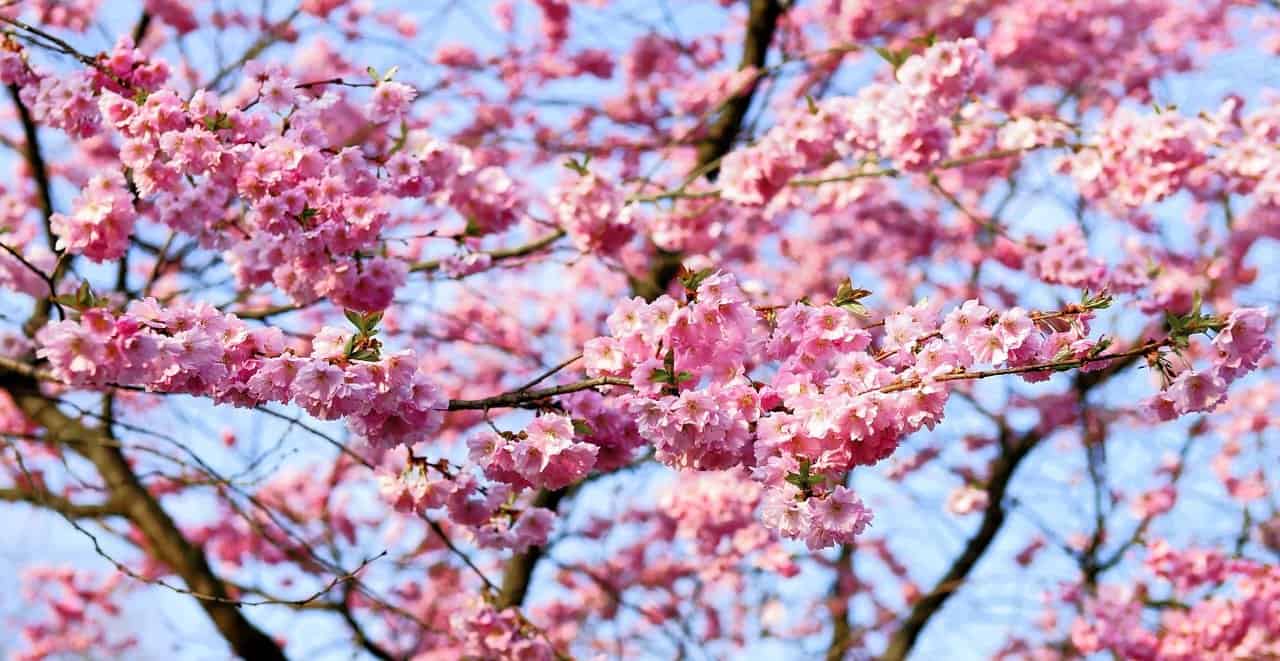


Leave a Reply